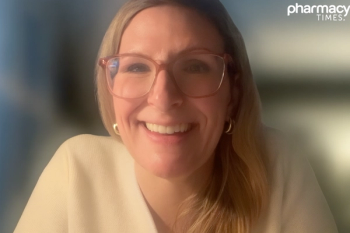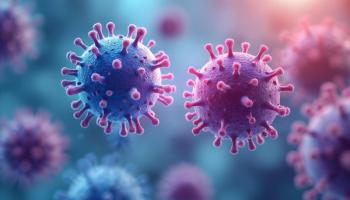
Study Identifies Which Students at Risk for Pandemic-Related Psychological Distress
Key Takeaways
- COVID-19 heightened psychological distress among university students, with significant increases in severe distress and decreased resilience and well-being.
- Mental health service utilization slightly declined during the pandemic, with shifts from on-campus to hometown services.
The results found that women, non-binary, and sexual minority students are at the highest risk.
Research published in Frontiers in Public Health shows that the COVID-19 pandemic led to major disruptions in the lives of university students. The analysis found that several demographic groups—such as women, non-binary, and sexual minority students—were more likely to be at an elevated risk for severe psychological distress.1,2
University or college students are already at a greater risk of mental health concerns, and little was known about how the pandemic impacted the distress and mental health services utilized by these students across the US. Further, the COVID-19 pandemic was believed to change the mental health needs of students.1,2
The study authors used survey data from the National College Health Assessment both prior to (before March 2020; n = 88,986) and during the COVID-19 pandemic (Spring 2021; n = 96,869). The study examined mental health symptoms and utilization of mental health services among undergraduate students who were aged 18 to 24 years of age and attending 4-year universities in the US.2
From the Spring 2021 time point, approximately 68.1% of the sample were female, 53.6% were White, and 74% identified as straight or heterosexual. The remainder of students were Asian (15.7%), Hispanic (15.2%), multi or biracial (10.6%), Black (3.3%), and Other (1.7%), which included American Indian or Native Alaskan, Middle Eastern or Arab Origin, Native Hawaiian or Other Pacific Islander, or not listed. About 27.4% of students were male, and the remaining 4.5% were non-binary, and 26% were not straight or heterosexual.2
Overall, the representation of college year for students were fairly even, with 27.2% being first year, 23% second year, 26.1% third year, and 19.5% fourth year. Approximately 4.2% of students were in their fifth year or later of their undergraduate degree.2
According to the findings, there were statistically significant increases in rates of psychological distress from pre (M = 7.98, SD = 5.20) to peak (M = 9.26, SD = 5.49) COVID-19, indicating greater overall distress. Additionally, when looking at rates of students who were suffering from severe psychological distress (measured by a score of 13+ on the K6 scale), rates increased from approximately 19.0% pre-pandemic to 26.8% in Spring 2021. Regarding other mental health indicators, there were statistically significant decreases for resilience (M = 5.98, SD = 1.50 to M = 5.92, SD = 1.55) and psychological well-being (M = 46.03, SD = 8.18 to M = 43.83, SD = 8.70), whereas loneliness increased (M = 5.49, SD = 1.86 to M = 5.76, SD = 1.87). Additionally, during the peak of the COVID-19 pandemic, approximately 82.4% of students reported experiencing moderate to high stress over the past 30 days compared to 75.8% pre-COVID-19.2
The study also showed that university students accessed services slightly less during the peak of the pandemic (28.4% to 27.8%), and significant changes were found in where students accessed services. Of those who received mental health services, the rates of on-campus use of mental health services decreased from about 58.6% to 44.4%, and rates of utilizing local community services near campus decreased from 24.8% to 21.9%. Interestingly, students began using their hometown’s mental health services more frequently (prior: 45.1%; peak: 49.3%), and more students received treatment for diagnosed anxiety (prior: 18.9%; peak: 19.9%) and depression (prior: 15.1%; peak: 15.9%).2
“These findings are important to better understand sub-groups who disproportionally suffer from severe psychological distress but may not be accessing the necessary care,” the study reports.
"While issues such as a lack of access to mental health services and discrimination within the health care system are undoubtedly factors in students’ reluctance to seek mental health care, the stigma surrounding mental health is also prohibitive,” Elaine Cooper Russell, PhD, public health safety, policy, and operations expert at Booz Allen Hamilton, said in a news release. “Improvements in mental health resources must also address stigma and empower students to access necessary care.”1
The findings also indicated that certain combinations of demographic subgroups may be at a higher risk for severe psychological distress, with non-White, non-heterosexual, and non-binary students experiencing the greatest rates. Non-White students were less likely to access mental health services (21.8%) compared with their White counterparts (32.8%), even though White students were observed to have the lowest reported severe psychological distress scores. Women (30.2%) and non-binary (54.6%) students were also more likely to access mental health services.2
“More US college students suffered from mental health concerns during the pandemic, but fewer received necessary mental health treatment,” said Russell in the news release. “When developing innovative approaches to improving mental health outcomes on college campuses, it is important to be culturally sensitive and understand the diverse needs of the specific student population.”1
REFERENCES
1. George Mason University. New study shows that university students experienced increased psychological distress during COVID-19, but utilized fewer support services. News release. October 30, 2024. Accessed October 30, 2024. https://www.eurekalert.org/news-releases/1062869
2. Russell EC, Abidogun TM, Lindley LL and Griffin KW. Impact of the COVID-19 pandemic on university students’ psychological distress, well-being, and utilization of mental health services in the United States: populations at greatest risk. Front. Public Health. 2024;12:1442773. doi:10.3389/fpubh.2024.1442773
Newsletter
Stay informed on drug updates, treatment guidelines, and pharmacy practice trends—subscribe to Pharmacy Times for weekly clinical insights.


















































































































































































































